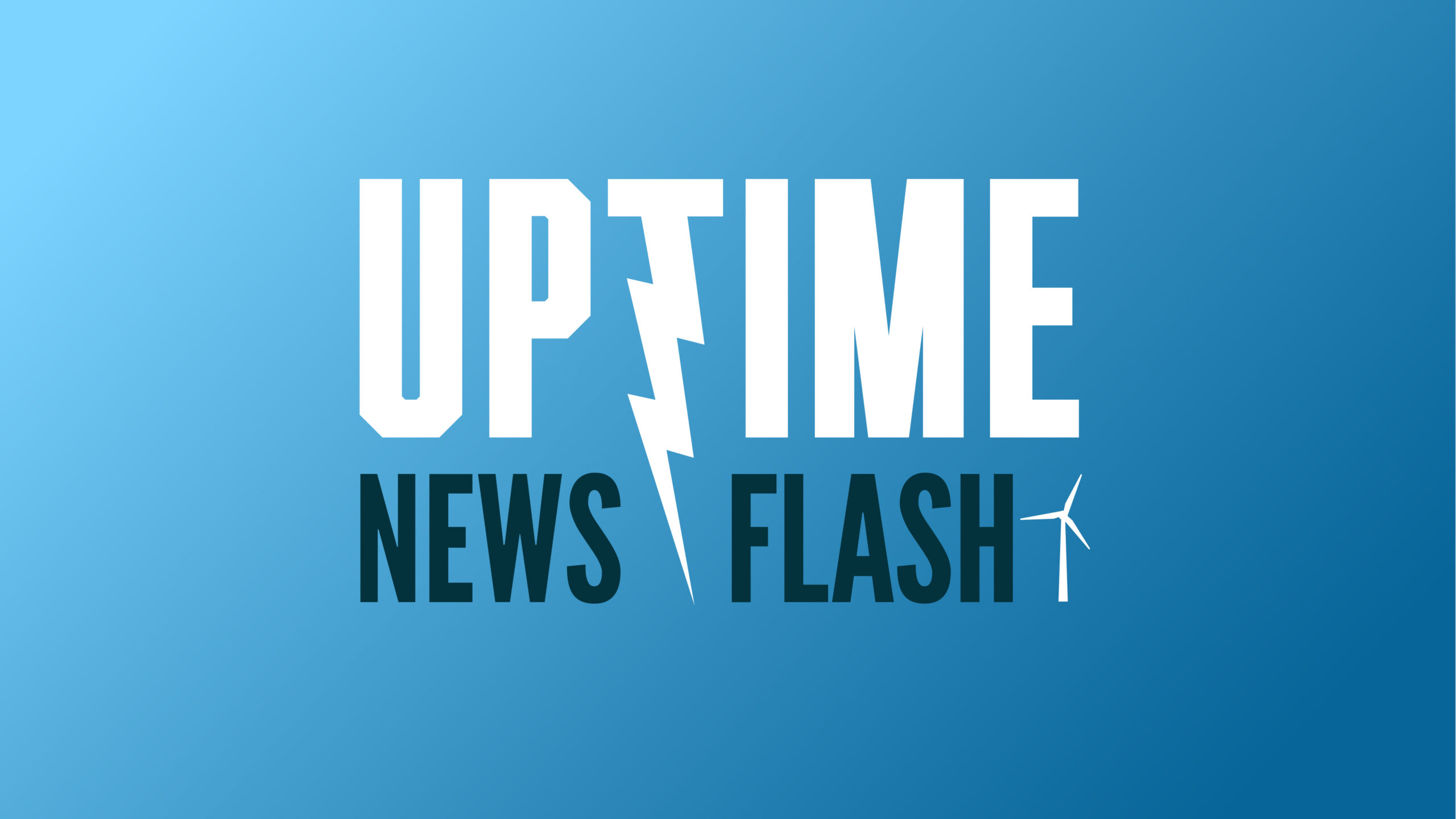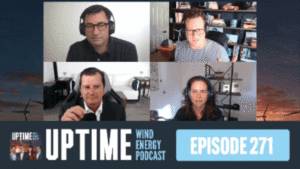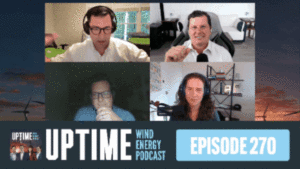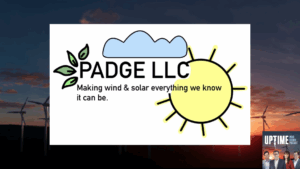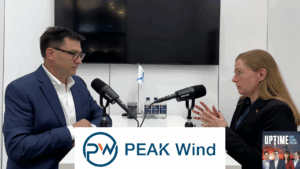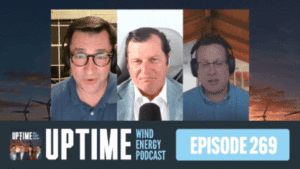Podcast: Play in new window | Download
On News Flash this week we cover BP and JERA joining forces to create a offshore wind partnership called JERA Nex. Also Ørsted has signed an agreement with Cathay Life Insurance to sell a 50% stake in the Changhua 4 offshore wind farm. And Solaria has announced plans to reach 14. 3 gigawatts of install capacity by 2028.
Sign up now for Uptime Tech News, our weekly email update on all things wind technology. This episode is sponsored by Weather Guard Lightning Tech. Learn more about Weather Guard’s StrikeTape Wind Turbine LPS retrofit. Follow the show on Facebook, YouTube, Twitter, Linkedin and visit Weather Guard on the web. And subscribe to Rosemary Barnes’ YouTube channel here. Have a question we can answer on the show? Email us!
Pardalote Consulting – https://www.pardaloteconsulting.com
Weather Guard Lightning Tech – www.weatherguardwind.com
Intelstor – https://www.intelstor.com
Join us at The Wind Energy O&M Australia Conference – https://www.windaustralia.com
Welcome to Uptime News Flash. Industry news lightning fast. Your hosts, Alan Hall, Joel Saxom, and Phil Totaro discuss the latest deals, mergers, and alliances that will shape the future of wind power. News Flash is brought to you by IntelStor. For market intelligence that generates revenue, visit www. intelstor. com.
Allen Hall: First up this week, Phil, BP and JERA are joining forces to create a major offshore wind partnership called JERA Next. BP and this equally owned joint venture will have a total of 13 gigawatts potential net generating capacity combining the operating assets and the development projects all together.
The partners have committed up to 5. 8 billion in capital funding through 2030. All right, BP is trying to slowly back away from some renewable energy projects, but now they’ve joined forces with JIRA. I want to understand what this dynamic is.
Philip Totaro: Well, it’s fascinating because with the resignation as well of the, BP offshore wind executive, their executive director It’s almost like this is the full effect of the oil and gas pivot coming to fruition.
It’s kind of, it sounds to me, the way I read this is the resignation of, we’re not really going to do offshore wind except through this venture with JERA from now on where they basically do all the work and we’ll take a percentage. But it’s, it just feels like BP’s got bigger issues because even their oil and gas business isn’t the healthiest at the moment.
So, they’re pivoting and focusing on that whilst providing JIRA the opportunity to continue the growth that they’ve been on.
Joel Saxum: BP is confusing me here. I feel like their operations strategy and marketing and PR departments need to go and sit in a room together to figure out what they’re actually doing.
They’re in the midst of selling all their onshore assets in the U. S. We know that. They’ve, sold stakes in certain offshore projects in the U. S. They’ve said they’re not going to do wind. They said they were going to do wind. So it’d be interesting to watch this one. And I think Phil, the, what you’re talking about is mirroring some of what others are doing, right?
Like we know Shell now, Shell’s out. They’re like, we’re not doing offshore wind anymore. And we’ve seen Econor take a stake in Orsted to be able to provide capital, provide support, but kind of stand back and let the other people do it and just be a part of it. And that’s what it looks like BP is doing here more now.
So maybe that just aligns with their strategy a bit better. For the long haul. So maybe we’ll see some more people doing this, just providing capital, being a part of it, but.
Allen Hall: Orsted has signed an agreement with Cathay Life Insurance, Taiwan’s leading insurance company, to sell a 50 percent stake in the 583 megawatt grater Changhua 4 offshore wind farm.
The 1. 6 billion transaction includes both ownership and funding commitments, with payments scheduled for 2024 and 2025. Phil, Orsted could use the cash right now to help fund other projects. Kathy is a unique partner though that being it from the insurance company And that’s their focus is mostly insurance, I believe.
Philip Totaro: Yeah, I mean, it’s not the first time insurance companies have made investments in projects, particularly minority investments. I mean, we’ve got John Hancock making, onshore wind investments in the U. S. But I think this is actually the first time that Cathay Life has dove into any kind of power generation at all, let alone renewable power generation.
So, good on them for that. But it’s also a recognition that they have the capital to be able to invest and they want and need to be able to park their money somewhere. And it’s a sign that they’re taking some confidence in the Taiwanese offshore market at the moment, which has had, a few fits and starts lately with, some policy hurdles and some, power offtake and pricing hurdles that I hope are largely resolved at this point.
But it’s certainly enough for Cathay Life to be able to plunk down some cash.
Joel Saxum: I like this move from Orsted. We’ve seen a lot of these kind of things happen, but what Orsted is doing, as you look at the greater mission of the company, is to get assets out there churning, to get, to help with the energy transition to make a greener, greener economy in the future.
And what they’re doing is just that. They’re cycling capital and getting partners on board after they built some things to get money in the door, give off some ownership, and then move on to the next project. So I’d like, I like to see what they’re doing and I like to see a lot of that come in from other companies in the future.
Allen Hall: And Solaria has announced plans to reach 14. 3 gigawatts of install capacity by 2028, working towards their ultimate goal of 18 gigawatts by 2030. The company is currently constructing 1. 4 gigawatts of photovoltaic plants in Spain with secured financing. Now, Phil, Solaria has a portfolio of mostly solar.
a little wind and a tiny amount of batteries, but they’re a big player in Spain with 18 gigawatts by 2030.
Philip Totaro: Yeah, and they actually want to expand significantly in wind, which says to me that they’re probably on the hunt for Projects that, I mean, certainly greenfield projects, but also potentially repowering opportunities in Spain, which there are plenty Spain has one of the older average lifespans of its installed base and needs to, get a little more serious about asset repowering and for Solaria to come in and want to deploy capital on wind and hybrid projects.
I, again, I think this is overall a good move on their part.
Joel Saxum: I like to see that they’re trying to technologically diversify themselves. And one of my big pushes right now in the market is. Batteries, battery energy storage system. So baths or whatever you want to call it.
They’re about 6 percent batteries in their 2028 portfolio is the plan. So from, if we look back just a few years ago, there was barely any companies with any kind of battery storage built into them, and I think that’s a bigger part of the renewable energy mix in the future, so I’m glad to see they’re putting some capital towards it.



